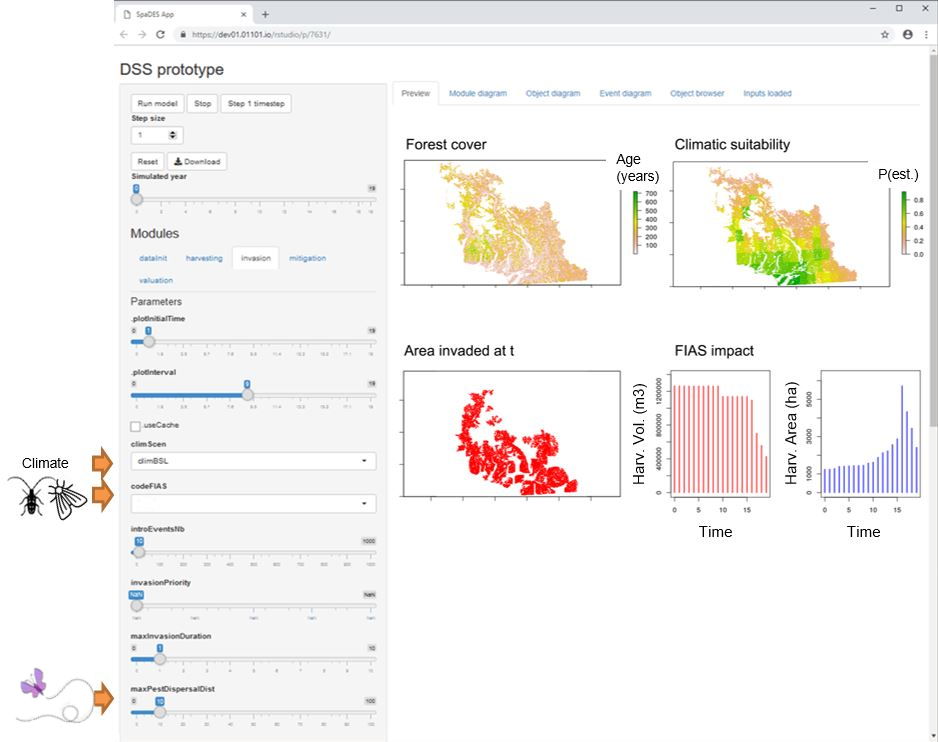One of the main inputs of the decision support system are climatic suitability maps for FIS of interest under current and future climatic conditions (Figures 2 and 3). Those maps are outputs of species distribution models (SDM) built using a correlative approach to relate FIS occurrence data (from native and invaded ranges) to climatic variables (19 bioclimatic variables from WorldClim). This approach allowed to characterize the ecological niche of the four FIS of interest (AGM, ALB, SOD, DED) and to project suitable habitat under current and future climatic conditions. For the latter, we used three representative concentration pathways (RCPs) from the IPCC (RCP 2.6, 4.5, and 8.5) and three general circulation models (GCMs: CCSM4, HadGEM2-ES and MIROC5), resulting in nine different scenarios. Future climatic suitability are provided thereby provided for one future climate change scenario only (CCSM4-RCP 8.5).

Figure 2. Climatic suitability maps under current (left) and future (right) climatic conditions for the Asian gypsy moth (AGM; top) and the Asian longhorned beetle (ALB; bottom). Note that future climatic suitability is shown for one climate change scenario only (CCSM4-RCP8.5).

Figure 3. Climatic suitability maps under current (left) and future (right) climatic conditions for the Dutch elm disease (DED; top) and the sudden oak death (SOD; bottom). Note that future climatic suitability is shown for one climate change scenario only (CCSM4-RCP8.5).


 Figure 1. User front-end of the DSS prototype, highlighting some of the main end-user input parameters controlling the invasion process (climate scenario, species selection, maximal dispersal distance) and displaying example results for a severe FIS invasion in south-western BC. Figure prepared by Valentine Lafond.
Figure 1. User front-end of the DSS prototype, highlighting some of the main end-user input parameters controlling the invasion process (climate scenario, species selection, maximal dispersal distance) and displaying example results for a severe FIS invasion in south-western BC. Figure prepared by Valentine Lafond.



